The region of the Gulf Coast of Mexico covering parts of the states of Veracruz and Tabasco was known to the Aztecs and other Nahuatl-speaking groups under the name of “Olman” meaning caoutchouc. A derivation of this name was used by early archaeologists to designate what was perhaps the most intriguing of the outstanding cultures that developed in Meso-america, the Olmec. Their original name still is as unknown as the meaning of many of their cultural representations.
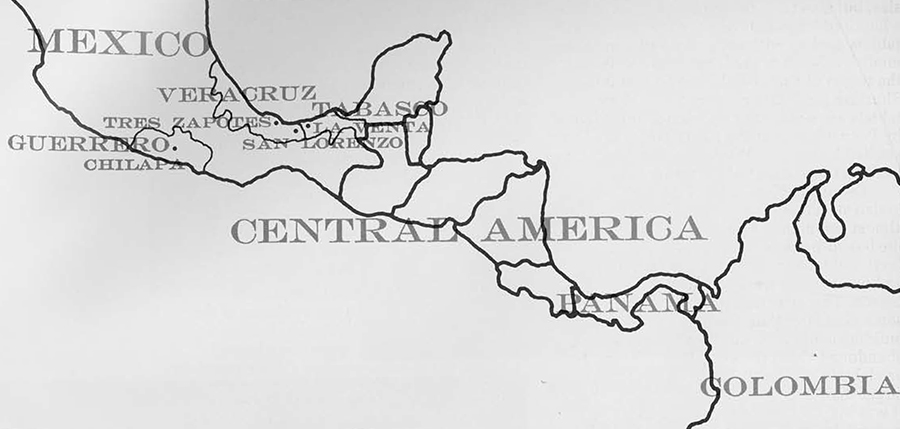
Although first known from the Mexican sites of Tres Zapotes and San Lorenzo (in Veracruz) and La Venta (in Tabasco), which are considered their place of origin, Olmec art and influence are known throughout Mexico and most of Central America. Chronologically they extend from 1500 B.C. to about A.D. 300. Their age, their degree of cultural development, and their influence on other cultures make the Olmec culture the mother culture of Mesoamerica.
Evidence of their cultural heritage suggests that Olmec society was dominated by religious cults, a characteristic found in practically all of the cultures that later developed in Meso-america.
The Olmec adopted the most powerful animal that shared their habitat, the jaguar, as their main totem. It is not known when or why this happened. It is possible that the physical strength of the animal combined with his impressive appearance and secretive ways, typical of the feline character, left a deep impression on the early Olmec so that supernatural powers were attributed to him. Though the Olmec are possibly the earliest to have worshipped the jaguar, artifactual material from such other early cultures as the Chavin of Peru and the San Agustin of Colombia indicates that they also were members of a jaguar cult.
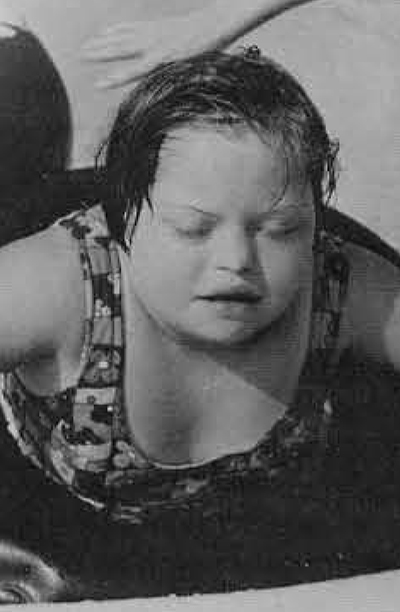
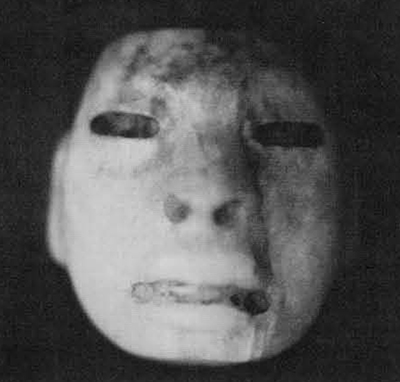
It is known that the members of any religion always try to identify themselves with their main deity. This identification is also in most cases of a physical nature. In many mythologies, where animals have been adopted as part of their cult, it is frequent to find representations of these animals with anthropomorphic characteristics. Among the Olmec we have the curious representation of humans with what is thought to be different degrees of zoomorphic (jaguar-like) characteristics expressed mainly in the facial features. These representations are found in sculpture, figurines, masks, bas-relief, and pottery decorations, and there is a diversity of materials—clay, different types of stone even including such hard stones as serpentine, jadite, amethyst and obsidian. In other words, they would spare no pains to assure not only the durability but also the great esthetic value of their “jaguar-influenced” sculptures.
Most of these were discovered along and near the Gulf Coast area in the already mentioned sites.
It is also interesting to note that the Olmec seem to have felt a kind of fascination for those individuals affected by deformities as shown in their representations. Lacking scientific knowledge, it is possible that all sorts of mystical concepts were used to evaluate or explain deformities. This type of behavior was also characteristic of later cultures and was commented upon by the Spaniards who found the emperor Montezuma surrounded by hunchbacks and dwarfs. The Olmec left a generous number of figurines representing different kinds of deformities, such as dwarfs, hunchbacks, and even individuals with leper-like characteristics.
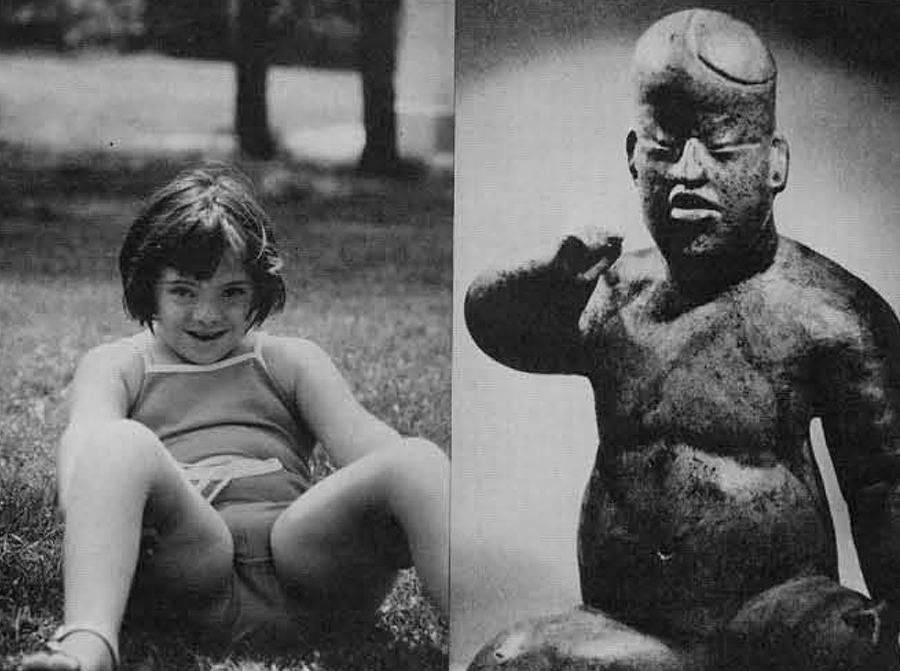
A close look at the extreme micrognathia of the serpentine figure of an infant from Iguala, Guerrero, for example, shows it as strongly reminiscent of an individual affected by the Pierre Robin syndrome. The fact that it is an infant supports this point of view since individuals affected by this congenital defect rarely live beyond infancy, even today, due to respiratory distress and/or feeding difficulties. In other words, the Olmec were meticulous observers of the pathos occurring in their gene pool and represented this in their artifactual material with equal care and realism.
In all ages and cultures there is one type of ailment that never failed to impress the healthy members of any given society in a most peculiar, even dramatic way; that is mental retardation. Some examples—in Classical Greece the mentally feeble were allowed to perish from exposure and even drowned. The ancient Romans had laws for the physical elimination of these unfortunates. In Medieval Europe some regarded the mentally retarded as humans without a soul and connected with witchcraft, while others considered them holy. The latter attitude, however, was more characteristic of Eastern cultures.
From this observation, the question which now arises concerns Olmec behavior towards the mentally retarded. The only way to speculate on this matter would be through the careful observation of their cultural production, comparing it to known facts regarding the attitudes of primitive or advanced societies towards the feebleminded. Olmec careful representations of their pathos seem to indicate the presence of a great degree of mysticism in their society.
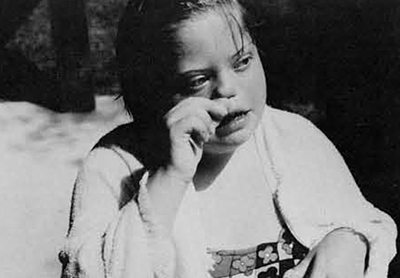

At this point we would like to comment on the theory of the were-jaguar babies which has been a center of discussion since the discovery of the Olmec culture.
These sculptures represent a child’s face with slanted eyes and well-marked epican thus. The round and puffy face depicts an open mouth with the lower lip drawn downward, sometimes with fangs, but toothless gums. The nose is short with a broad bridge. The head is clearly brachycephalic with a flattened occiput. The body is fat, sometimes even obese, without genitalia. The hands are shown with claw-like nails in some sculptures.
It was believed that these creatures were the hybrid product of sexual relations between a human being and a jaguar. An interesting indication to this theory is a painting in the Oxtotitlan cave, near Chilapa, Mexico, representing a human female copulating with a snarling jaguar. Olmec scenes of this kind have been reported by Matthew Stirling on carvings found near San Lorenzo.
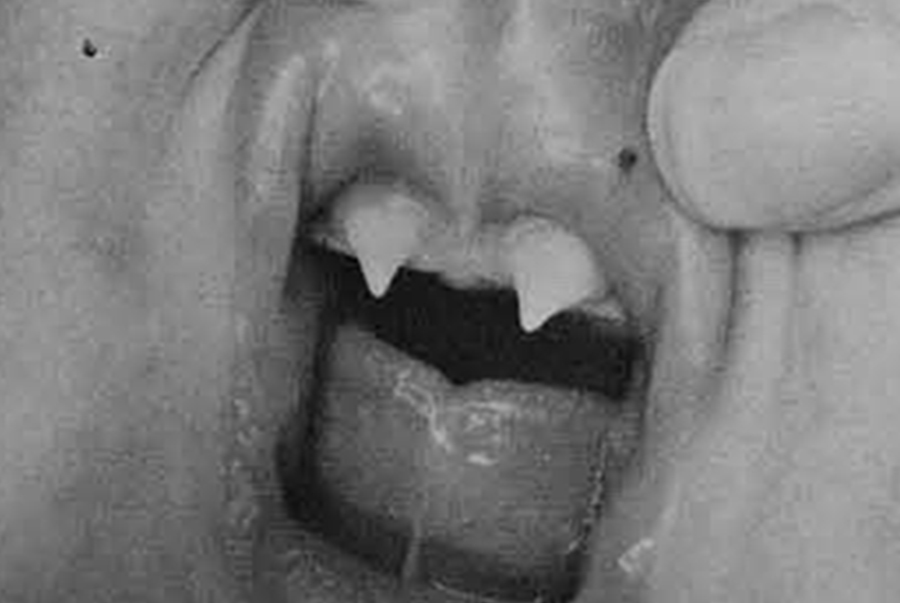
Accepting the definite evidence of the jaguar cult and the were-jaguar babies, another question arises: were these hybrid humans the sheer product of Olmec phantasy, or were they rather a variation of a real representation? In view of the facts discussed above concerning Olmec interest in human abnormalities, the possibility of a real representation, rather than a pure product of phantasy, has to be taken into consideration.
There is one common type of congenital mental retardation, found among all peoples of the world, which gives the affected strikingly similar features. We are referring to Down’s syndrome. Langon Down, who in 1866 first recognized this condition as a separate affection with sui generis character, called it “mongolism” because of the superficial resemblance of the affected to some of the peoples of the Orient, due mainly to the epicanthic fold present in both. An individual with Down’s syndrome will, in most cases, also have a congenital heart disease so that life expectancy is greatly reduced.
There is a great variation in degree among the affected depending on the individual’s karyotype but the general physical characteristics are very distinct: small or even dwarfed stature, a small flat head with a high cephalic index, flat face with round baby-like cheeks (even in those reaching adulthood), short nose with a broad bridge, the eyes nystagmic with strabismus and always with an epicanthic fold. Above a protruding chin, the mouth, whose lower lip shows thickened buccal mucosa, is usually held open. Teeth development is retarded. The trunk and limbs are stumpy with broad hands and feet. Anomalies of the hands are common with sometimes broad and downwards directed claw-like fingernails. The body is fat with hyperextensibility and flexibility of the joints so that acrobatic or contortionist postures can easily be assumed. The genitalia is very small, with greatly reduced sperm count.
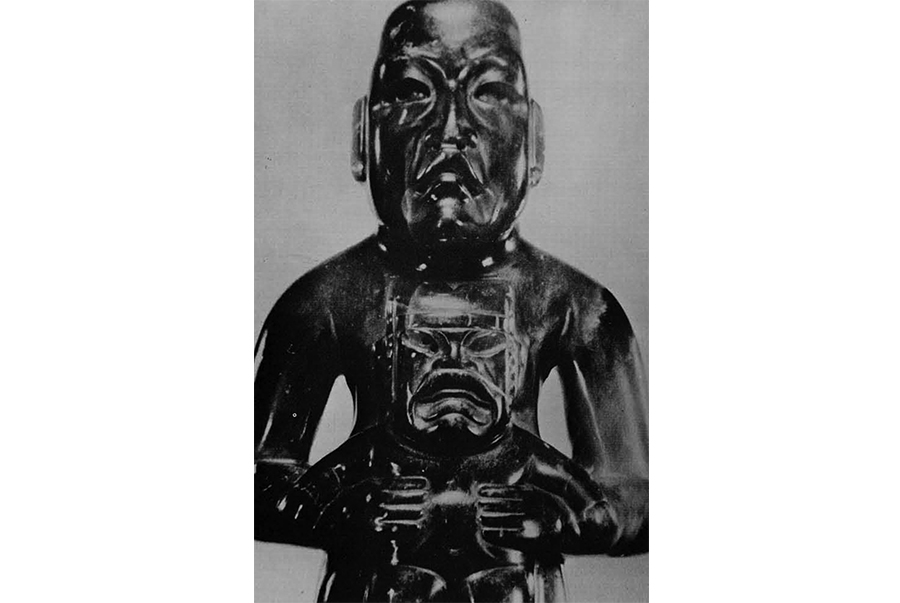
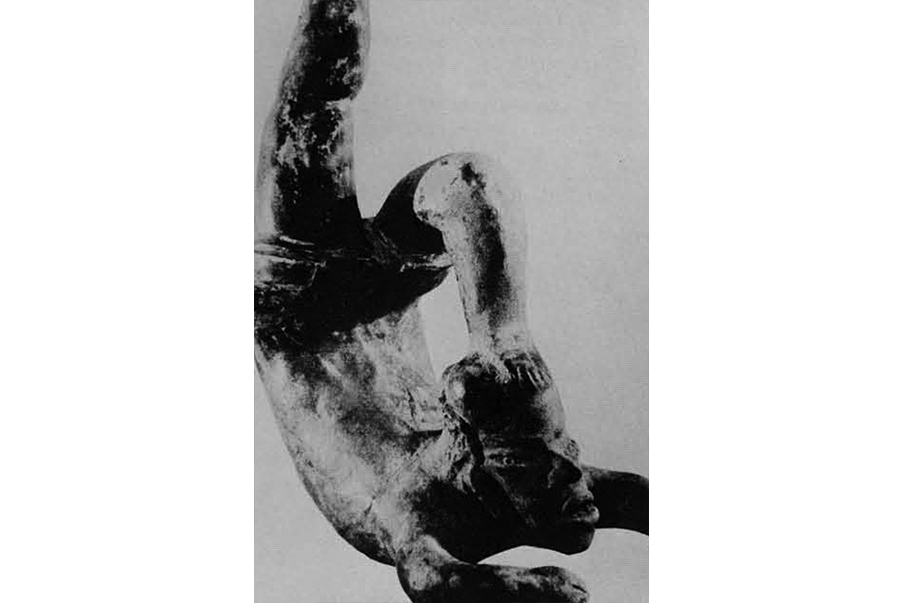
A comparison of many of the Olmec were-jaguar representations with individuals affected by Down’s syndrome shows such striking similarities that it has led us to the assumption that the early “were-jaguar babies” were the representation of an Olmec infant affected by Down’s syndrome rather than a mystical creature.
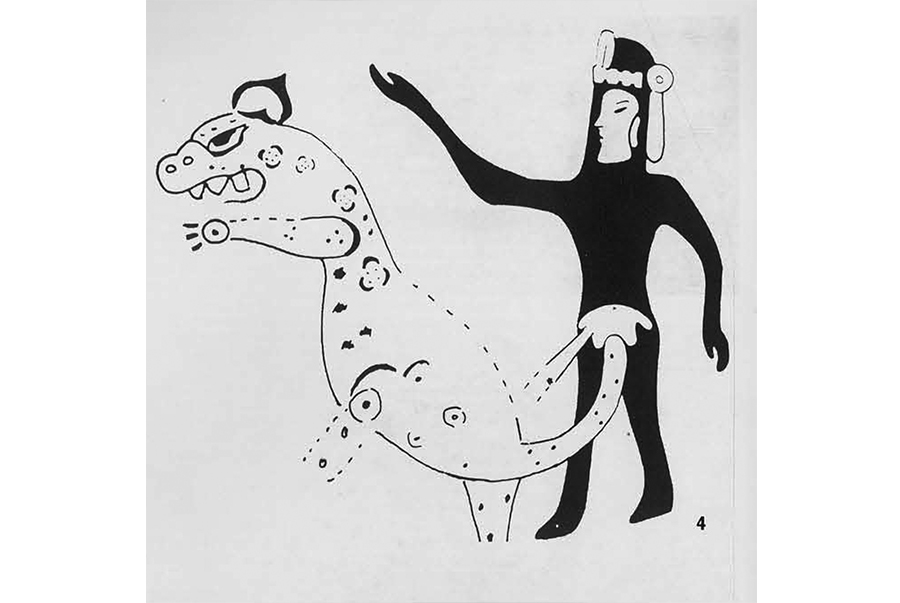
It is possible that the explanation the Olmec gave to this affection was the mystical one of a woman having been fertilized by a jaguar-deity; once the belief had been established, further stylized artifactual representations followed. Even more so if the mother of the affected baby happened to be a member of the priesthood or a wife of a priest. It is known that with increasing age the possibilities of a woman giving birth to a baby with Down’s syndrome also increase. Penrose found an incidence of 27.5 per 1,000 births among women of 45-49 years of age.
We theorize that the evolution of the were-jaguar cult among the Olmec could have been the product of their deep concern for these abnormal individuals, and the casual physical resemblance they saw between them and their totemic jaguar. All mixed with religious overtones. In other words, Jaguar Cult-Down’s Syndrome-Were Jaguar.
